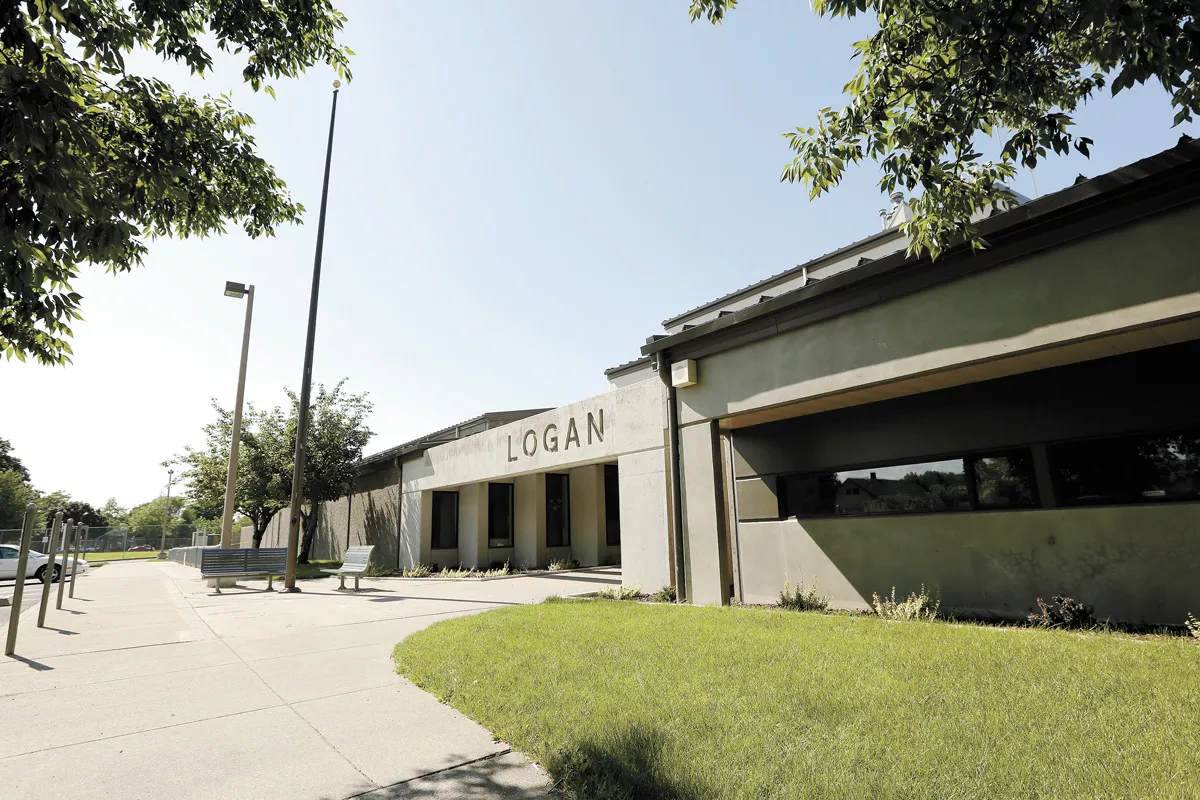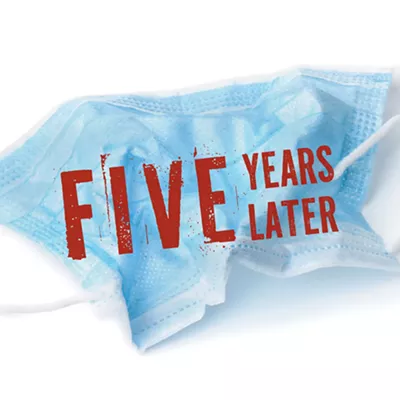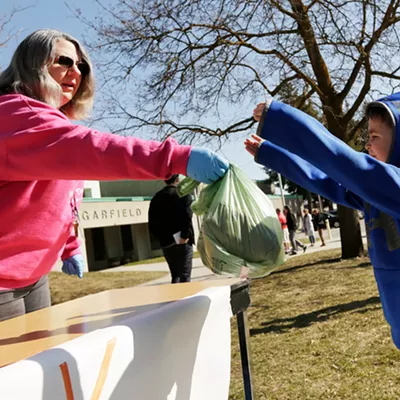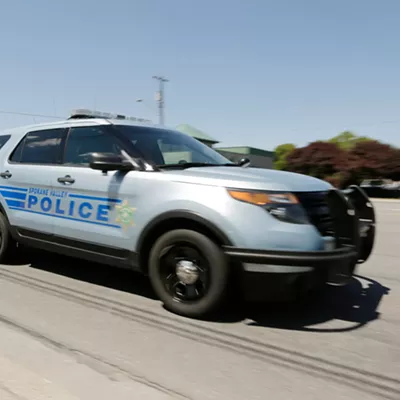
This summer, as schools weighed the risks of opening classrooms for in-person learning, the science wasn't clear on how COVID-19 might spread in a room full of children. There was little gleaned from the way school openings played out in other countries, and local schools were reluctant to put the safety of students and teachers at risk.
It was, as Spokane's then-health officer Bob Lutz put it, a "natural experiment." And if schools opened prematurely, it could cause surging cases, packed hospitals and more death.
Some local school districts, like Mead and Coeur d'Alene Public Schools, opened anyway. And three months later, that worst-case-scenario is well underway. Cases are surging. Kootenai Health hospital is packed. And COVID-19 deaths are rising.
But here's the thing: There's little evidence that schools have anything to do with it. Students and staff may be getting COVID-19 elsewhere in the community, but rarely inside school buildings, health officials say.
"We have seen COVID-19 introduced into schools, but one thing that's reassuring in our data is that we're not seeing large, explosive outbreaks when COVID-19 is introduced into the school," says Kathy Lofy, Washington state's health officer. "The safety measures that we have outlined for all schools in Washington appear to be very effective. And I think that's really promising data."
That thinking is backed by a new report, Testing the Waters: Is It Time to Go Back to School?, released by the Bellevue-based Institute for Disease Modeling last week. The report, which used a model based on King County schools, found that in-person learning without countermeasures — without grouping students, screening for symptoms, contact tracing and masks — could add "significant COVID-19 burden," with an expected 45 percent of teachers and 33 percent of students expected to get infected over three months. With those countermeasures, however, school can be "highly effective in reducing school-based transmission," with just 2 percent or less of students, teachers and staff expected to get the virus.
As the report suggests, local school districts like Spokane Public Schools and Central Valley School Districts are indeed testing the waters on in-person school by phasing in younger grades over the span of weeks. Yet it remains unclear when middle and high school students may return to class. And that's partly because questions remain over how to isolate students without disrupting in-person instruction, and whether high levels of community spread will ruin plans to open schools up again.
"Our plan is to follow the guidelines, and to be slow and methodical to make sure we're keeping staff and students safe, starting with a digestible bite," says Heather Bybee, director of curriculum for Spokane Public Schools.
TRACKING THE VIRUS IN SCHOOLS
In September, Coeur d'Alene Public Schools began with a hybrid learning model. Students attended in-person a couple days per week, but stayed home on other days. There were some positive cases identified among students and staff, but no transmission of the virus within the school.
Then, the school district decided to open for in-person instruction. Within a week, the infection rate rose in the school just as it rose in the North Idaho community. Dozens of students or staff members tested positive. Hundreds more had to quarantine because they were considered a "close contact" of a positive case. School was open, yet many students had to stay home anyway.
Still, as of last week, the school district believes it has had less than five in-school transmissions out of more than 120 positive test results, says spokesman Scott Maben. The number of students who had to quarantine, however, has been an issue, despite the district's belief that they've helped prevent larger clusters of cases in school, he says.
"There's no doubt that having students in quarantine is disruptive to the educational mission," he says. "We do worry about students falling behind, even as teachers endeavor to keep quarantine students engaged in remote learning."
That's not a problem that more testing will necessarily solve. A negative test alone isn't enough to automatically bring a student in quarantine back. Coeur d'Alene, for example, was requiring students to quarantine for 14 days regardless — though the district recently added an early return option if a student gets a negative test and meets other criteria. But school districts in Spokane won't get someone out of quarantine due solely to a negative test if they were a close contact of a confirmed case.
Also, as the "Testing the Waters" report indicates, diagnostic testing is less valuable than other preventive measures in preventing infections in schools. If there's a low infection rate, false positive rapid tests will outnumber true positives, the report says. Testing is valuable at reducing the spread, however, when schools get to a point of being a "significant source of infections," it says.
"What we see in the classroom is pretty structured and good in preventing COVID-19."
A better way to reduce the amount of students who must quarantine is by doing better case investigations, says Mark Springer, epidemiologist with the Spokane Regional Health District. If there are two students who have COVID-19 in the same classroom, for example, that might cause the entire class to quarantine if it's unknown where their infection came from. But if case investigators find out that both got COVID from somewhere outside the school, he says, you may not need everyone to quarantine. The health district along with the school districts themselves have helped with contact tracing efforts.
"With a good contact investigation and tracing efforts, you can minimize quarantining in schools," Springer says.
Case investigations, however, are much more difficult to do in secondary schools, where students may be in six different classrooms with different students throughout the day. In elementary school, a person with COVID-19 may only cause a few students sitting around them to quarantine.
"But in secondary, that may involve 25 students based on one person who's positive," Springer says.
The classrooms are not necessarily the main concern in spreading COVID, however. It's other parts of the school, he says.
"What we see in the classroom is pretty structured and good in preventing COVID-19," Springer says. "But it's once we get out of the classroom — hallways, lunches, socializing where you can't control social distancing — where you have potential of transmission occurring."
SEEING THEM SOON?
In Spokane, health officials signed off on Spokane Public Schools' plan to bring back kindergarten through second grade. Kindergartners are already back, and first-graders came back this week. The plan is to bring back second-graders by Nov. 30.
The Central Valley School District has moved a bit faster, having already brought back kindergartners through third-graders.
Locally, however, infection rates are higher than they've ever been. On Saturday, Spokane racked up a record 348 new COVID-19 cases, and the virus shows no signs of slowing down here or across the country. Last week, Lacy Fehrenbach, deputy secretary for COVID response with the Washington Department of Health, said it's "not the ideal time" to be expanding learning. But the good news, she says, is that schools elsewhere have brought students back when rates were higher than they are in Washington, and it didn't seem to make a dramatic difference on the safety of in-person learning.
The rise in school cases, in other words, may be a symptom of rising rates broadly — but not the cause of it.
Springer says there has been some talk about speeding up school reopening efforts within the health district. (Those talks took place before Lutz, Spokane's health officer, was fired last week.) It's a school district decision, but Spokane Public Schools has leaned on the health district for guidance.
The next few weeks may be crucial in determining the ability for more students to come back. If schools show they are able to manage positive cases, that can inspire more confidence in other students coming back — particularly in elementary grades.
"I think you will see schools move to elementary kids and look at hybrid options," Springer says. "And then they will feel more confident and pursue what it's going to take to open up more fully."
But families will have to be patient.
"We're taking it one step at a time, being as methodical and deliberate as possible and reaching out with health partners who will say when is the right time," says Bybee, with Spokane Public Schools. "As a nation, we're learning more and more. So it's really hard to predict." ♦




















